Round 3 of Pittsburgh Chess Club tournament: another approach against the Sicilian: squeezing with the Bind
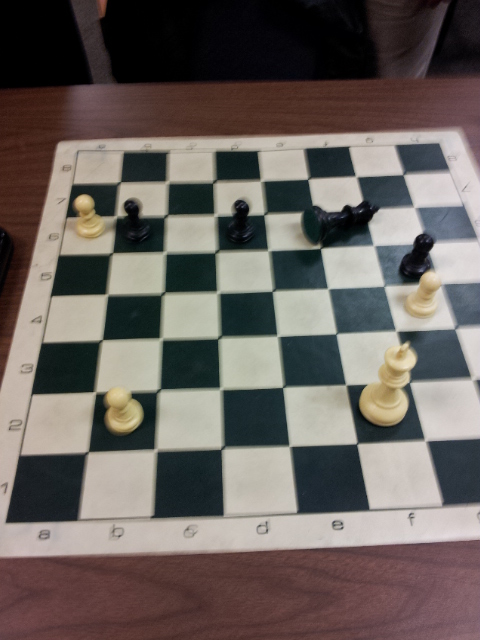
Yesterday was the third round of the current six-round Tuesday night tournament at the Pittsburgh Chess Club, the 14th Fred Sorensen Memorial.
Every round has gotten tougher and tougher, as it should because winners get paired against each other. This week I was White against a youthful opponent who was, like me, an Expert in rating (his current rating is 2034, while mine is 2110). I expected an intense struggle, and there was one. Our game was the second to last to finish, taking just over four hours to complete, going all the way to the endgame.
In this post, I discuss
- White fighting against the Sicilian in a different way from how I have discussed earlier
- the reasons for certain inaccuracies in the game that made it longer than it could have been
Playing the Sicilian as White
In my post about my game in the second round, I discussed some philosophical and psychological ideas behind playing the Sicilian as either color.
I have also written about one way of playing White in the Sicilian, aiming for quick development and a direct attack on Black’s King.
The slow approach
Yesterday, I played White in the Sicilian, but in a very different style: the slow, “positional” style of the Maróczy Bind. I was using a bit of psychology, entering the game with the intention of playing a space-gaining type of game to squeeze my opponent to death. I had never played my opponent before, but based on general experience, like to use a squeeze when facing younger opponents rather than a direct attack on the King.
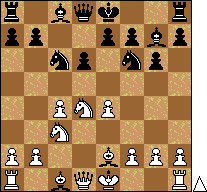
The point of the Bind is to gain space using the c4 and e4 Pawns, and start off the game really just defending these Pawns and the d4 square, and preventing Black from gaining counterplay. The plan then is to complete development and fortifying the position, and only after that begin some kind of attack on Black, whether on the Queen side, center, or King side, depending on the concrete direction of the game.
Black’s task against the Bind is to relieve pressure through exchanging minor pieces and taking advantage of holes in White’s position by maneuvers to establish outposts and then engage in counterplay, usually on the Queen side but sometimes also in the center or even King side.
A note on generalism in chess
I am happy to play in a variety of different styles in chess, in different openings. There was a time when I preferred to be a specialist, but in the end, I found it more fun and effective, personally, to be a generalist. I think today, especially, when people have access to databases of games and computer-aided analysis of forcing tactical lines, generalism and unpredictability are actually assets.
For example, I am aware that every time I annotate one of my games here online, I am providing research material for any future opponents of mine. So be it. You can be sure that I will never play exactly the same way as I have just played recently!
Overview of my game
The opening
The game didn’t even originally start out as a Sicilian. It started out with what I expected was going to become a King’s Indian Defense, but my opponent refused to comply, and transposed into the Maróczy Bind of the Accelerated Dragon of the Sicilian Defense instead.
The middle
At a critical point near the end of the opening phase, I chose a less familiar, more aggressive continuation than what most people play (and what my opponent expected). My opponent fell in with my plans and allowed me to achieve what I considered a pleasant Bind on his position.
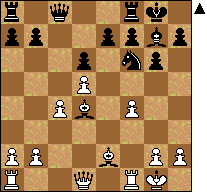
To my surprise, instead of letting me continue the slow strangle, my opponent responded violently with an interesting Pawn sacrifice to open up the position. However, he tried to hard to not make it a sacrifice, and to regain the Pawn, but that resulted in my keeping the Pawn anyway and also smashing into his King side. I pressed on with the attack, and quickly achieved a winning position by force.
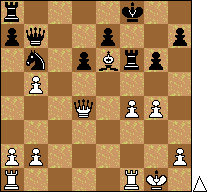
But then I strangely faltered, losing mental energy. In retrospect it is hard to see how I missed what I missed, but sometimes that happens. I had not budgeted my energy expenditure well during the game: I spent a lot of energy playing almost perfectly, like a computer, earlier in the game, to achieve the won position, and then once I achieved the won position, I somehow relaxed and got careless.
The end
I played what I thought was the winning move, and expected resignation, when all of a sudden I noticed that I missed a single move by Black, a move that completely altered the nature of the position. I even momentarily thought I might be losing!!
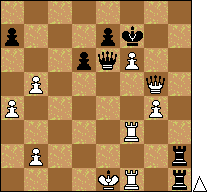
I regrouped and saw that I was not losing, but Black could simplify into an endgame one Pawn down that might be good enough for a draw. I had a possible winning plan in case Black entered into this endgame and was prepared to fight it out.
But then it was Black’s turn to falter badly, and he chose not to enter the endgame, but this resulted in my winning by means of a threat against his King. The only way for Black to stop checkmate was to enter a worse endgame, a King and Pawn endgame that was hopeless. I marched my a Pawn toward its Queening square and he resigned. What an end to the game!

The complete annotated game
Enjoy playing over the game with my annotations, including diagrams!
Conclusion
Yesterday’s game was an intense and long. The ups and downs reflect human fallibility as well as ingenuity. After a good deal of accurate and forcing play, I almost let a win slip away, but my opponent erred and I managed to win after all. Chess reminds me again and again that even when the game is almost over, you cannot get careless and let up on the pressure until the game really is over.
